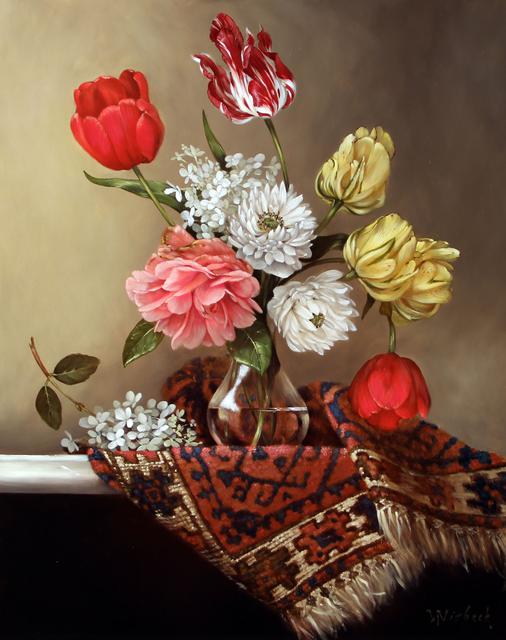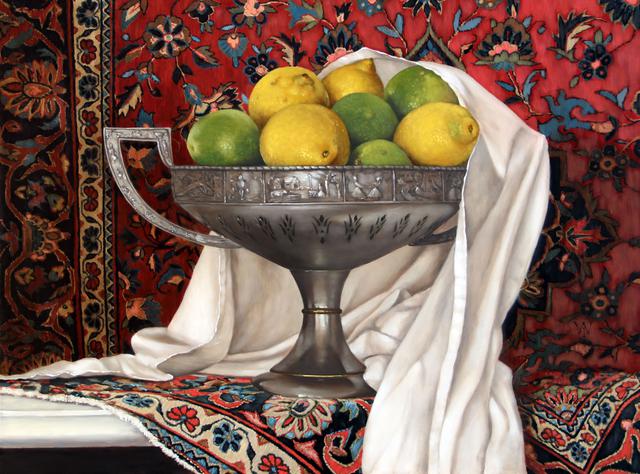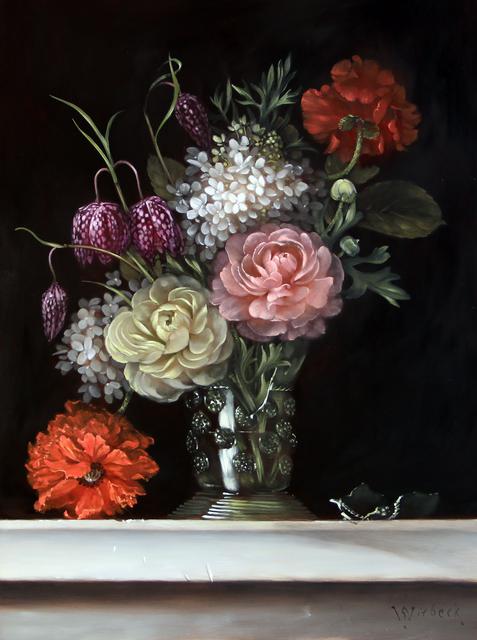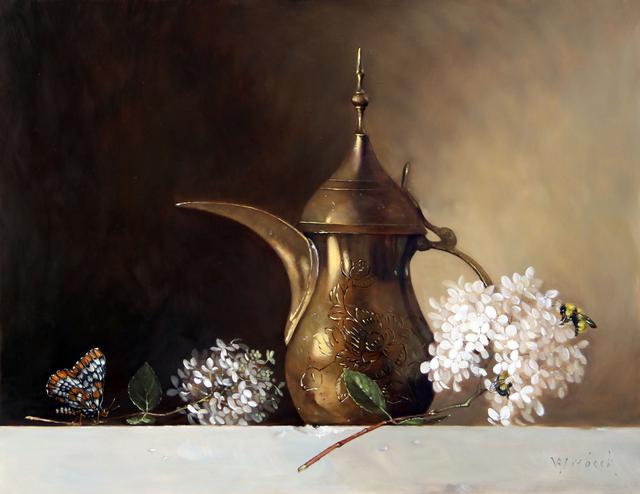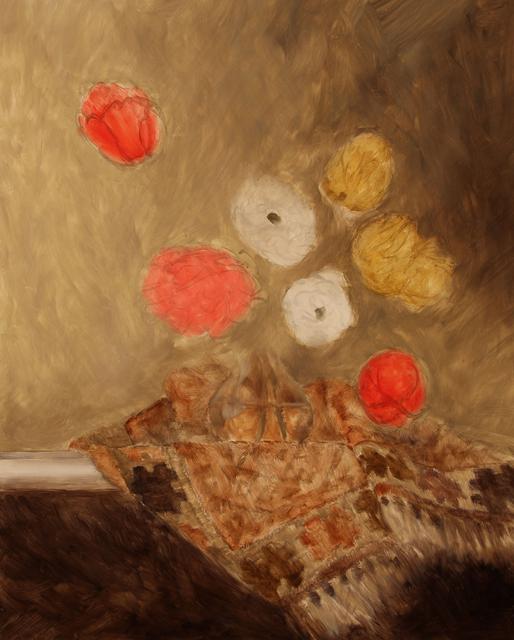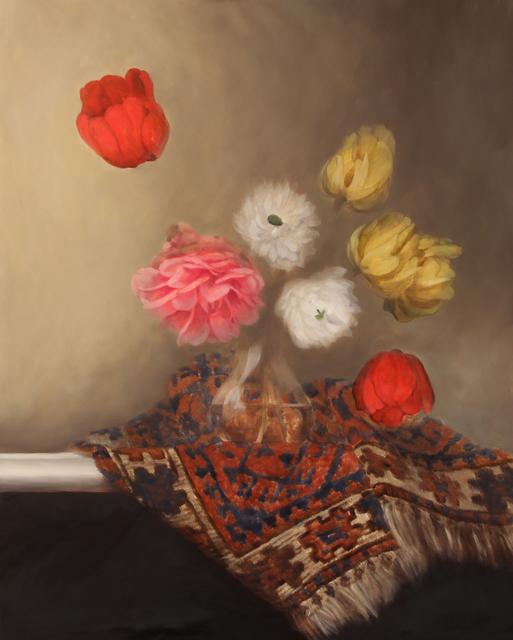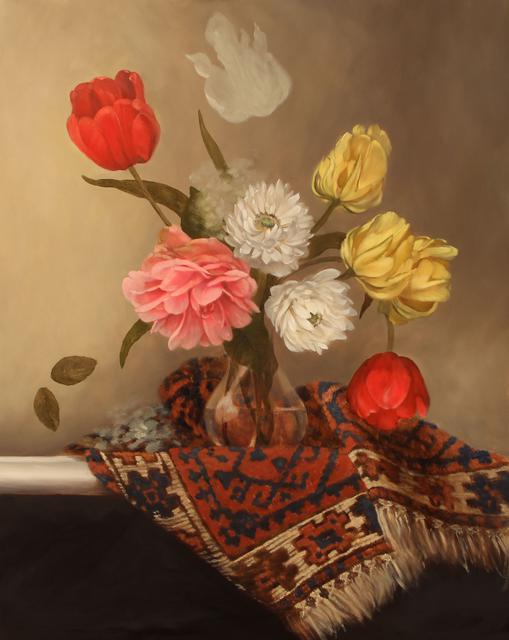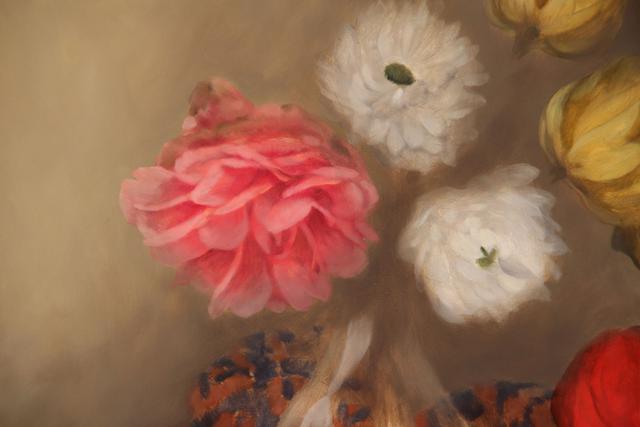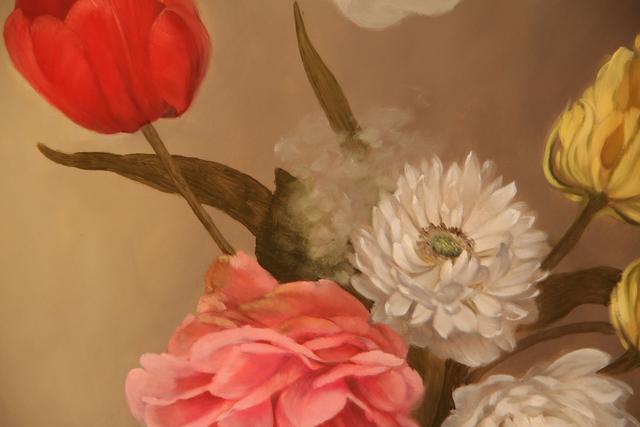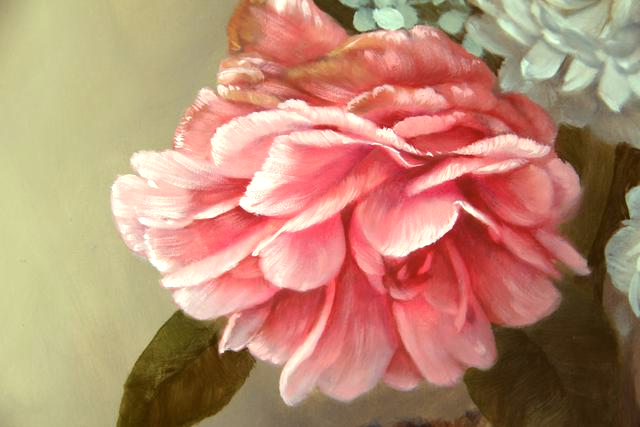Whitbeck Notes
Winter 2019
Baluch Floral
20" x 16" oil on panel
A modern scholar writing on 17th century art theorists: "Dutch art theorists make problematic sources in other ways too: It is hard to assess the extent to which their views on art were representative of the views of Dutch art-lovers as a whole." and "Very few of the art-buying burghers of Holland had read Pliny or Vasari, or studied Greek and Roman sculpture in depth...they were not as affected by the rhetoric of humanist aesthetics."
Reading these few lines from the book Dutch Flower Painting 1600 - 1720 by Paul Taylor stirred up some thoughts I have been having about the "symbolism" of Dutch still life. It seems difficult now a days to find a description of a 17th century still life without having the ever present idea that everything in the painting was a moral message put there by the artist for the viewer to see, understand and take to heart. Todays descriptions of these paintings make it seem as if that was their sole purpose, that the artist was catering to viewers who would have bought a still life or floral for its pious reminder to stay on the straight and narrow and to live the life of an upstanding moral citizen. No doubt for some this would well be the case. But as a human being, living, in the scheme of things, not too distant from the early modern era, it is hard for me to believe that a majority of the newly formed middle class of those days were not just buying art because it pleased them and that the images and colors would add greatly to the front room of their home.
Painting in progress
A scholar or humanist ponders and writes on the meaning and symbolism of life, very deep, very intellectual. The humanist thinks, writes and publishes these thoughts, that is what they do, that is their world and their life. But maybe it just stayed in their realm for the most part, and even though it might have been of interest to the everyday person, it was not something that they dwelled on too heavily, or carried with them into the buying of their luxury goods. I imagine the owners of art today might just find themselves in a similar situation. In talking to the artist of the work or the gallery owner selling it, all of the deep meaning behind the painting, the thoughts and reasons for why this is this way or why that is that way would all make perfect sense and add to its attraction. But at the first it was the colors, shapes and the general feel of the painting that caused that second look and made them want to bring it home. The thought provoking, philosophical meaning is something added, but not the main reason for buying.
Painting in progress
Hearing art historians of today writing on certain 17th century art works put forth things like "Such a presentation may have reminded viewers of their own mortality since it prompted them to recall Isaiah 40:8..." or "It is suggesting the possibility of resurrection and renewal..." does not, I think, apply to the general public. I would assume that a sort of prestige could come along with owning a still life that portrayed a watch, a skull, a snuffed out candle, etc. It would look to the guests in your home that Well! What a learned man we know. All the humanist scholars of the day are printing moral booklets that, from what I hear, talk of all these things. Impressive! Simplified I know. But you get the point. And even if it turned out that the proud owner of this moralizing painting was the most crooked guy in town, at least on the surface it looked otherwise.
The artists of that time were innovative and creative and for sure turning the pages on the history of art. But at the same time they were also craftsmen who found the need to sell paintings. If it was the vanitas genre that was selling, then artists would be sure to have a few of those in the works and the transience of life would be present on their panels and canvases. Or maybe it was the letter writing theme that was so popular, or the soldiers drinking in the tavern or the merry company or the kitchen scene. All artists were looking to one another and noticing what took hold and what did not. I would say that that was the main driving force behind the painters decision in what he or she wanted to paint next, and not the desire to flood the republic with moralizing art work.
Painting in progress
Here is a page about prints from one of my favorite illustrated books by the 20th century Dutch artist Rien Poortvliet titled: Daily Life in Holland in the Year 1566: "In those few days (the Iconoclasm of 1566) quite a lot of paintings were destroyed, often for the sole reason that they contained representations of saints or biblical figures or naked people. While they were at it, accounts were settled also with those prints of naked women. These were everywhere in great variety, and they hung in almost every home. The titles of these prints were proper, of course: Adam and Eve, or The Fall, or similar names. You can safely assume that depictions of, for example Lot and his Daughters were made only so they could be turned into pleasing pictures of breasts and buttocks!" All I am trying to say is that it would be easy to take an art history course and come out of it thinking that that was the world of 17th century art. The general public then, as now, likes a good picture, plain and simple.
This was just a thought of mine that keeps coming up when I find a catalog of Dutch art filled to bursting with "what the artist meant" or "the artist added this to call to mind the proverb..." and that sort of thing. Feel free to write me with any thoughts, for or against. I find it an interesting topic. I was actually planning on writing about my flower painting technique for the Winter Whitbeck Notes, but got a little sidetracked when it came down to pen in hand, ready to go. So to accommodate that just a little, and for those interested, I have added some photos below of my latest floral in stages, from start to finish. In the next Notes I plan on a more detailed description of the technique, I promise.
"Every beloved object is the midpoint of paradise" - Novalis
1st Stage
2nd Stage
3rd Stage
Finished!
Close ups
Be sure to keep an eye on my website www.jameswhitbeck.com for the latest paintings as they are finished throughout the winter. The 2020 Art Show schedule will start to take shape in the early spring, so keep an eye on that too.
All my best,
James Whitbeck
413-695-3937
